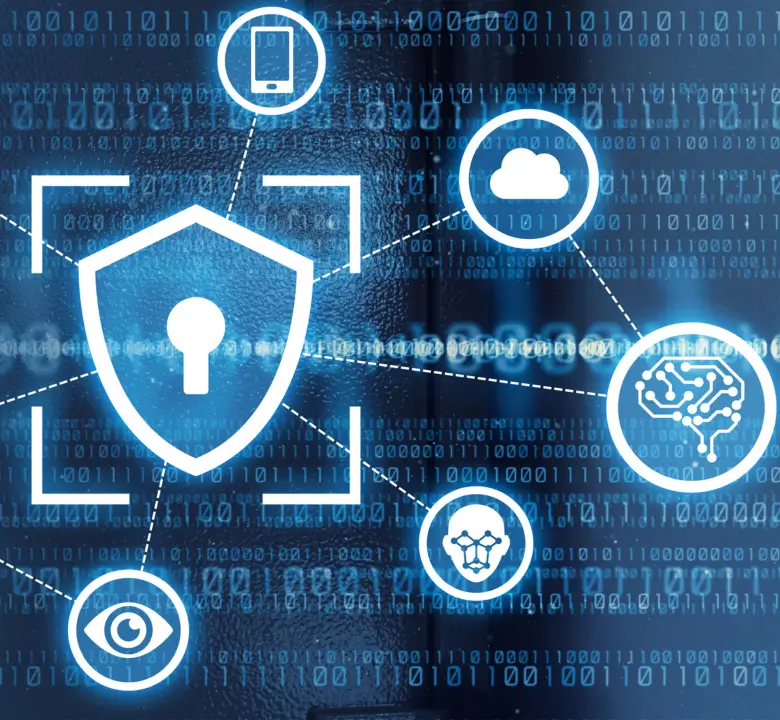Network Security Implementation
Protecting your network from threats with robust security measures, continuous monitoring, and resilient defense strategies.
Network security is a comprehensive approach to defending your organization’s communication infrastructure, data, and traffic from cyberattacks, unauthorized access, and data breaches. It includes the deployment of various technologies, policies, and practices that protect your network from threats, both at the perimeter and within.
How Does Network Security Work?
In today's digitally accelerated world, network security is more critical than ever. Every new connection, from LAN and WAN to IoT devices and cloud computing, introduces potential vulnerabilities. Cybercriminals are becoming increasingly sophisticated, using tactics like malware, ransomware, and DDoS attacks to exploit weaknesses.
Network security works by deploying multiple layers of protection across your digital infrastructure. From firewalls and encryption protocols to intrusion detection and prevention systems (IDPS), each layer is designed to detect, block, and respond to threats before they can compromise your systems.

Key Components of Network Security
Firewalls : Firewalls act as a barrier between your internal network and external threats, controlling incoming and outgoing traffic based on predefined security rules.
Intrusion Detection and Prevention Systems (IDPS) : These systems monitor network traffic in real-time to detect suspicious activity and take immediate action to prevent or mitigate cyberattacks.
Virtual Private Networks (VPNs) : VPNs secure data transmission over public networks by encrypting the connection, ensuring that sensitive information remains protected.
Network Access Control (NAC) : NAC ensures that only authorized devices and users can access your network, reducing the risk of insider threats and unauthorized access.
Encryption Protocols : Data encryption protects sensitive information by converting it into an unreadable format, preventing unauthorized access even if the data is intercepted.

Network Segmentation : Segmenting your network limits the spread of attacks by isolating sensitive data and systems from the rest of your network, making it harder for threats to move laterally.
Continuous Monitoring and Vulnerability Management : Proactive monitoring and regular updates ensure that your network security remains resilient. Vulnerabilities are identified and addressed before they can be exploited by attackers.
Types of Network Security Protections
Malware Protection
Detects and prevents malicious software that can disrupt or compromise your network.
Ransomware Defense
Mitigates ransomware attacks, which aim to lock your files and demand payment for their release.
DDoS Mitigation
Protects against Distributed Denial-of-Service attacks that overwhelm your network with traffic, causing disruptions.
Zero Trust Security
Enforces strict access controls by verifying every user and device attempting to access the network.
Frequently Asked Questions (FAQs)
What is network security?
Network security refers to the strategies, technologies, and policies used to protect an organization’s communication infrastructure from cyberattacks, unauthorized access, and data breaches.
Why is network security important for businesses?
As businesses adopt digital technologies, they become more vulnerable to cyber threats. Network security protects against data breaches, ensures compliance with security standards, and maintains business continuity.
What are the common types of network security threats?
Common threats include malware, ransomware, Distributed Denial-of-Service (DDoS) attacks, phishing, and unauthorized access. These attacks can disrupt operations and compromise sensitive data.
How do firewalls contribute to network security?
Firewalls create a barrier between your internal network and external threats by controlling incoming and outgoing traffic based on security rules, blocking unauthorized access.
What role does encryption play in network security?
Encryption converts sensitive data into an unreadable format, ensuring that even if data is intercepted, it cannot be accessed or used by attackers.
How does network segmentation improve security?
Network segmentation isolates different parts of your network, preventing attackers from moving laterally within the system. This limits the spread of threats and protects sensitive information.
What is a VPN, and how does it secure network connections?
A Virtual Private Network (VPN) encrypts data transmitted between users and the network, providing secure remote access and protecting sensitive information from being intercepted.
How often should network security be updated?
Network security requires continuous monitoring and regular updates to stay ahead of evolving cyber threats. This includes patching vulnerabilities and updating security policies as needed.
What is the difference between an Intrusion Detection System (IDS) and an Intrusion Prevention System (IPS)?
An IDS monitors network traffic for suspicious activity and alerts security teams, while an IPS actively blocks or prevents malicious traffic in real time.
Can network security prevent ransomware attacks?
Yes, network security measures like endpoint protection, real-time monitoring, and automated incident response can detect and prevent ransomware attacks, minimizing their impact.
